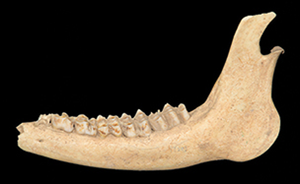Crossref Citations
This article has been cited by the following publications. This list is generated based on data provided by
Crossref.
2022.
ANNUAL BIBLIOGRAPHY.
Early China,
Vol. 45,
Issue. ,
p.
547.
Jacobson, Matthew J.
2022.
Archaeological Evidence for Community Resilience and Sustainability: A Bibliometric and Quantitative Review.
Sustainability,
Vol. 14,
Issue. 24,
p.
16591.
Festa, Marcella
and
Monteith, Francesca
2022.
Between Plain and Plateau: Micro-Transitions in Zooarchaeological Landscapes in the Guanzhong Region of Northwest China.
Land,
Vol. 11,
Issue. 8,
p.
1269.
Zhang, Ying
Sun, Guoping
Wang, Yonglei
Huang, Yunping
Kikuchi, Hiroki
and
Yang, Xiaoyan
2022.
Sustainable Hunting Strategy of Sika Deer (Cervus nippon) in the Neolithic Lower Yangtze River Region, China.
Frontiers in Earth Science,
Vol. 9,
Issue. ,
Li, Yue
Huang, Zexian
Zhang, Chengrui
Hou, Furen
Liu, Huan
Zhao, Dandan
Wang, Zhen
Qian, Yaopeng
and
Chen, Honghai
2022.
Antler arrowhead crafting at Zaoshugounao in the Guanzhong region: Implications for worked bone production in Bronze Age northern China.
Quaternary International,
Vol. 628,
Issue. ,
p.
54.
Brunson, Katherine
and
Lander, Brian
2023.
Deer and Humans in the Early Farming Communities of the Yellow River Valley: A Symbiotic Relationship.
Human Ecology,
Vol. 51,
Issue. 4,
p.
609.
Festa, Marcella
Dou, Haifeng
Monteith, Francesca
Orton, David
Wang, Qianwen
Zong, Tianyu
Liu, Bin
and
Li, Yue
2023.
Faunal exploitation during the Proto-Zhou period in the Jing River Valley: Evidence from Sunjia and Xitou.
Frontiers in Earth Science,
Vol. 10,
Issue. ,
Jaffe, Yitzchak
2023.
Food in Ancient China.
Hu, Qingbo
Dong, Ningning
Hu, Songmei
Qin, Xiaoli
and
Yuan, Jing
2023.
Meat procurement strategy from the Neolithic to the Bronze Age in the Guanzhong region of Shaanxi Province, China.
Frontiers in Earth Science,
Vol. 11,
Issue. ,
Pei, Xiaochen
Cao, Yanpeng
Yang, Yidi
Liew, Chun Mun
Zhang, Chi
Qin, Ling
Deng, Zhenhua
Zhu, Shuzheng
Chen, Yan
Zhao, Hao
Ning, Chao
Hudson, Mark J.
Zhang, Ying
and
Zhang, Hai
2024.
Bone-artefact production in late Neolithic central China: evidence from Pingliangtai.
Antiquity,
Vol. 98,
Issue. 399,
p.
688.
Bartosch, David
Kondinski, Aleksandar
and
Peng, Bei
2024.
Novelty and innovation, the joy of experimentation, and the “investigation of things” (gewu) in pre-modern China: the example of gunpowder.
International Communication of Chinese Culture,
Vol. 11,
Issue. 1,
p.
23.
